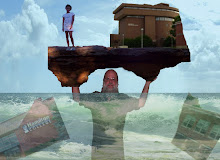ISTE NETS
1. Creativity and Innovation
Students demonstrate creative thinking, construct knowledge, and develop innovative products and processes using technology. Students:
A. apply existing knowledge to generate new ideas, products, or processes.
B. create original works as a means of personal or group expression.
C. use models and simulations to explore complex systems and issues.
D. identify trends and forecast possibilities.
Have students explain how blogs and wikis can be used in their class. Have them come up with new ways these can be used to display their work individually and as a group.
2. Communication and Collaboration
Students use digital media and environments to communicate and work collaboratively, including at a distance, to support individual learning and contribute to the learning of others. Students:
A. interact, collaborate, and publish with peers, experts, or others employing a variety of digital environments and media.
B. communicate information and ideas effectively to multiple audiences using a variety of media and formats.
C. develop cultural understanding and global awareness by engaging with learners of other cultures.
D. contribute to project teams to produce original works or solve problems.
I think the greatest way for students to do this is through Google Docs. Here they can work collaboratively online with documents, spreadsheets and PowerPoint presentations. The great part with this program is you do not need any Microsoft software the programs are right online for you to use. I think all students should be introduced to Google Docs it is a great free site where anyone can share documents and work with a group collaboratively to create a finished product.
3. Research and Information Fluency
Students apply digital tools to gather, evaluate, and use information. Students:
A. plan strategies to guide inquiry.
B. locate, organize, analyze, evaluate, synthesize, and ethically use information from a variety of sources and media.
C. evaluate and select information sources and digital tools based on the appropriateness to specific tasks.
D. process data and report results.
I realize not all teachers agree Wikipedia is a good thing. A good exercise for students would be to look up a topic on Wikipedia and then research in some scholarly articles found through a program like EBSCOhost and compare the differences. It should also be pointed out the difference between writings that can be used for a reference and places like Wikipedia where information is great for personal use but very weak as a reference.
4. Critical Thinking, Problem-Solving, and Decision-Making
Students use critical thinking skills to plan and conduct research, manage projects, solve problems, and make informed decisions using appropriate digital tools and resources. Students:
A. identify and define authentic problems and significant questions for investigation.
B. plan and manage activities to develop a solution or complete a project.
C. collect and analyze data to identify solutions and/or make informed decisions.
D. use multiple processes and diverse perspectives to explore alternative solutions.
I think making a podcast and posting it online is a great way to use all these tools. A theme needs to be decided on, research then needs to be done, followed by putting together the podcast outline, then actually recording, and putting the podcast online. Most students would have fun with this activity while learning all of the above traits.
5. Digital Citizenship
Students understand human, cultural, and societal issues related to technology and practice legal and ethical behavior. Students:
A. advocate and practice safe, legal, and responsible use of information and technology.
B. exhibit a positive attitude toward using technology that supports collaboration, learning, and productivity.
C. demonstrate personal responsibility for lifelong learning.
D. exhibit leadership for digital citizenship.
I think an important issue to explain to students is one of ethics and legal responsibilities. The example that comes to mind is one where students posted, on YouTube, their teacher having a fit of anger in the classroom. They were expelled and taken to court because the school had a policy in place banning photography and videos from being taken within the school without administrative permission. I think students need to be aware these things exist. One way students could be made aware of this is for them to look at videos, on YouTube, and find one they believe is either unethical or illegal and discuss it with the class.
6. Technology Operations and Concepts
Students demonstrate a sound understanding of technology concepts, systems, and operations. Students:
A. understand and use technology systems.
B. select and use applications effectively and productively.
C. troubleshoot systems and applications.
D. transfer current knowledge to learning of new technologies.
Having students put together a website on geocities would be an effective way of demonstrating the above. This could be done in either groups or as a class project. There are many items that could be added depending on how complex the project is to be. An example would be to require that the website contain video and or podcast.
Subscribe to:
Post Comments (Atom)


1 comment:
Very strong ideas. I liked your ethics story.
Z
Post a Comment